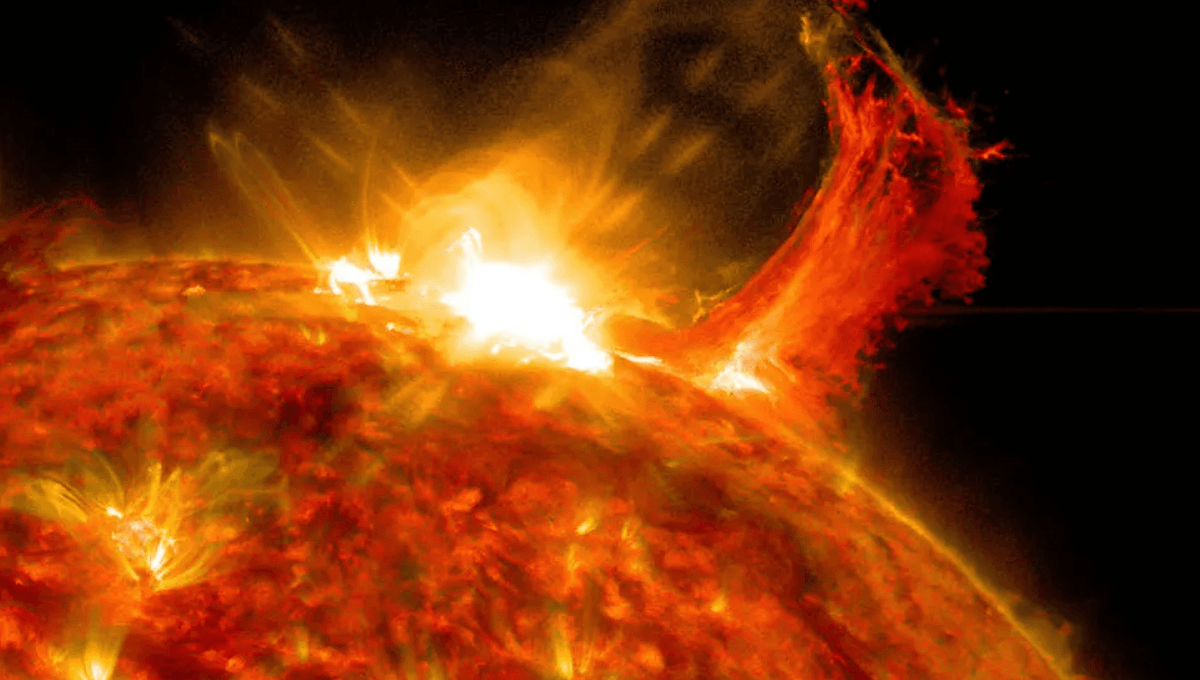
Researchers from a bunch of US government agencies recently published the results of the first-ever “Space Weather Tabletop Exercise” to assess their preparedness for a severe solar storm. It turns out, we’re woefully unprepared for such an event.
To sum up, an intense geomagnetic storm has the potential to spark regional-scale blackouts, radio communications outages, significant problems for GPS navigation systems, and extreme radiation exposure to satellites, astronauts, and commercial aviation.
More crucially, the report highlighted significant gaps in the system that would hamper a streamlined, rapid response. It suggested the US needs a “whole-of-government planning approach” for nasty space weather events, as well as an improved way to send out quick and easily understandable space weather notifications to warn the public and to inform key sectors like aviation, energy, and emergency services.
The findings come from the Space Weather Operations, Research, and Mitigation (SWORM) task force involving researchers from NASA, the National Ocean and Atmospheric Administration (NOAA), the National Science Foundation (NSF), the Department of Homeland Security, the Federal Emergency Management Agency (FEMA), and Johns Hopkins Applied Physics Laboratory.
The drill, performed in May 2024, set up several hypothetical scenarios to understand how the world would respond to the threat of an impending space weather event in January 2028.
A solar storm happens when the Sun blurts out a gust of energy and charged particles into space, known as a coronal mass ejection (CME). If one of these bursts hits Earth, it can damage and disrupt power grids, satellites, GPS, radio communications, and many other systems.
As the report notes, it’s only possible to gauge the impact of a coronal mass ejection about 30 minutes before it hits Earth, which scarcely leaves any time to get a warning out.
“Significant discussion was dedicated to the topic of whether the thirty minutes of notice for the imminent arrival of a CME was sufficient and the potential benefit/need of any advance, even if imprecise, warning,” the report warns.
To address this problem, the researchers agreed that the different bodies of researchers need “enhanced cross-agency communications and coordination”. They also said that these communication systems, as well as other key infrastructure like airports and power grids, must also be made more resilient and better prepared for such an event.
“Ongoing preparedness efforts for a space weather event are crucial because an extreme event has the potential to severely impact our nation’s critical infrastructure and threaten our national security,” the report added. “Just as we prepare for earthquakes, hurricanes, and cyberattacks, our nation must take action before a major space weather event occurs.”
Coincidentally, back in the real world, the largest geomagnetic disturbance in more than 20 years, known as the “Gannon Storm”, also began at the same time as the drill. The impact on Earth was minimal – a bit of trouble with some satellite movements and some minor power grid irregularities – but we might not be so lucky next time.
Source Link: The US Ran A Solar Storm Emergency Drill And It Suggested The Real Thing Would Be Catastrophic